Case Study: Ryanair’s Success Story
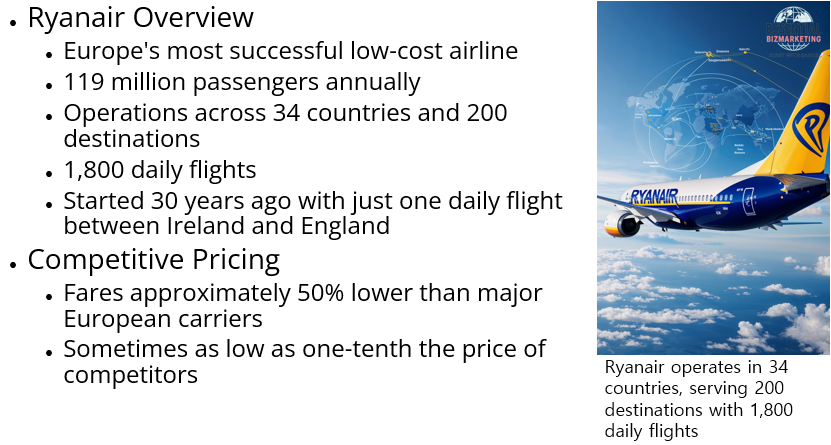
Ryanair has become Europe’s most successful low-cost airline, carrying 119 million passengers annually across 34 countries and 200 destinations, with 1,800 daily flights. Starting 30 years ago with just one daily flight between Ireland and England, the airline now offers fares approximately 50% lower than major European carriers, sometimes as low as one-tenth the price.

CEO Michael O’Leary describes Ryanair’s approach as similar to Walmart: “We pile it high and sell it cheap.” The airline’s strategy includes using less-congested secondary airports outside major European cities (like Stansted instead of Heathrow for London) which allows them to negotiate much lower airport fees – around $1.50 per passenger compared to $15-22 at major airports.
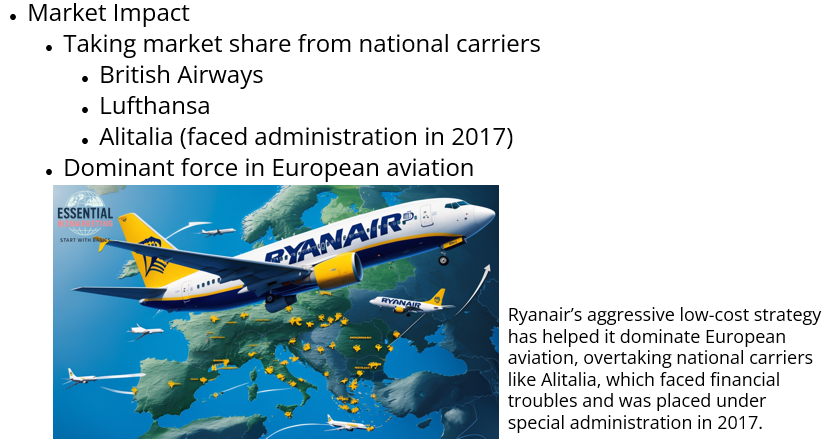
Ryanair aggressively cuts costs wherever possible: eliminating ice in drinks saves $50,000 annually, charging for checked baggage reduces fuel costs and ground services, and the airline doesn’t offer free water or Wi-Fi. This low-cost approach has enabled Ryanair to take market share from national carriers like British Airways, Lufthansa, and Alitalia (which faced administration in 2017). O’Leary’s confidence in this strategy has made Ryanair a dominant force in European aviation.
1. Company Analysis Before Selecting a Strategy

Before selecting a strategy, companies must conduct an internal analysis to define their mission and goals. A mission statement explains why a company exists and what it aims to achieve. Companies also identify core competencies, which refer to unique abilities that provide a competitive advantage.

To understand how they create value, businesses use a value-chain analysis, which divides company activities into primary activities, such as production and marketing, and support activities, such as human resources and procurement. Recognizing these factors helps companies develop strategies that align with their strengths.

The external business environment also influences strategy. Cultural, political, legal, and economic differences between countries create challenges for international companies. Language and customs affect marketing strategies, while legal requirements vary across nations, requiring adjustments in business operations. Economic conditions, such as tax policies and currency exchange rates, also play a crucial role in shaping business decisions.
2. Strategies Companies Use to Compete Internationally
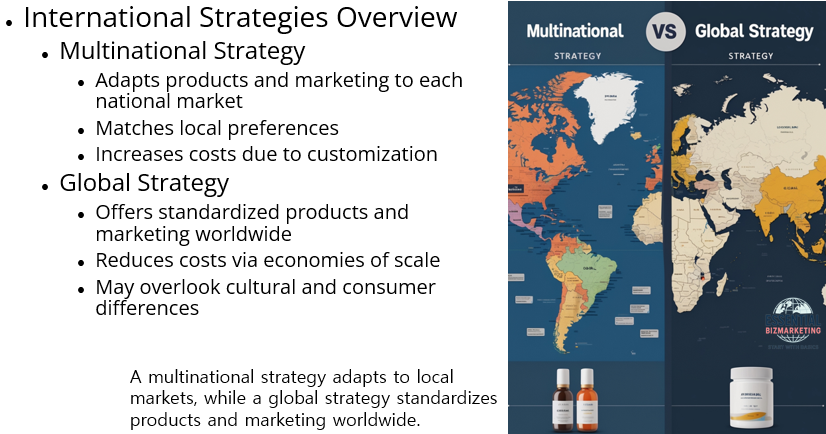
International businesses adopt different strategies depending on their goals and market conditions. Two primary international strategies are multinational and global strategies. A multinational strategy adapts products and marketing strategies to each national market to match local preferences. This approach enables companies to better serve local customers but increases costs due to the need for customization in different markets. A global strategy, in contrast, offers standardized products and marketing strategies worldwide. This approach reduces costs through economies of scale but may overlook important cultural and consumer differences in each market.
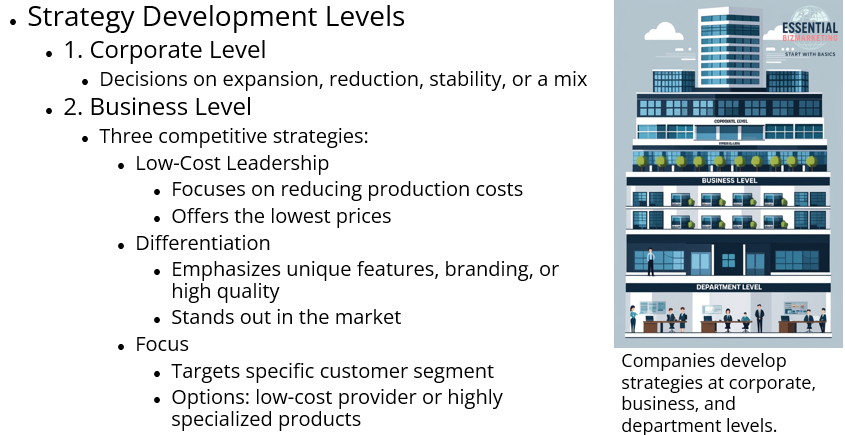
Companies also develop strategies at different levels. At the corporate level, businesses decide whether to expand, reduce operations, maintain stability, or use a mix of these approaches. At the business level, companies choose between three competitive strategies. A low-cost leadership strategy focuses on reducing production costs to offer the lowest prices. A differentiation strategy emphasizes unique product features, branding, or high quality to stand out in the market. A focus strategy targets a specific customer segment by either being a low-cost provider or offering highly specialized products.
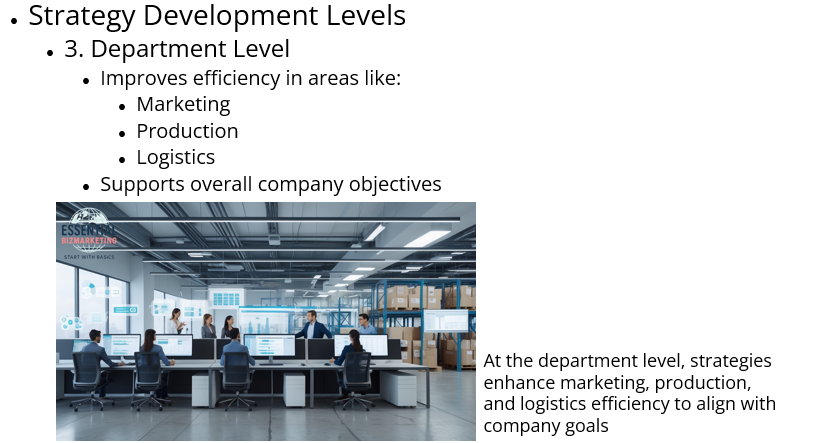
At the department level, strategies focus on improving efficiency in areas such as marketing, production, and logistics to support overall company objectives.
3. Selecting an Organizational Structure
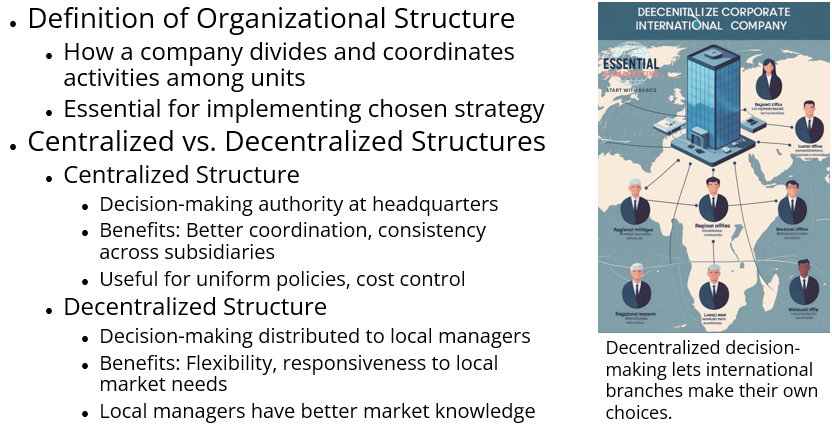
Once a strategy is chosen, a company needs an effective organizational structure to implement it. Organizational structure refers to how a company divides and coordinates activities among different units. The decision on whether to centralize or decentralize operations is critical. In a centralized structure, decision-making authority is concentrated at the headquarters, allowing for better coordination and consistency across subsidiaries. This approach is useful when uniform policies and cost control are important.
In a decentralized structure, decision-making is distributed to local managers who have better knowledge of their respective markets. This setup allows companies to be more flexible and responsive to local needs.
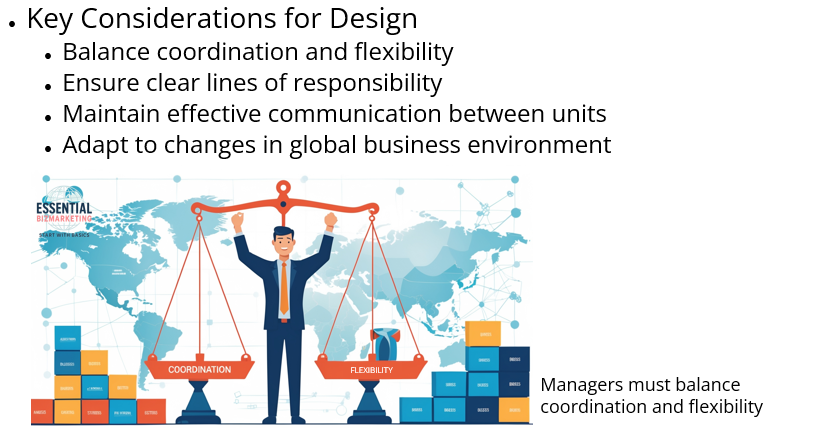
Managers must balance coordination and flexibility when designing an organizational structure. The structure should ensure clear lines of responsibility and effective communication between different units while remaining adaptable to changes in the global business environment.
4. Common Organizational Structures for International Businesses

There are four common types of international organizational structures. The first is the international division structure, which separates domestic and international operations into different divisions, with a manager overseeing international activities. This structure helps companies focus on global expansion without disrupting domestic operations but may limit coordination between different country units.
The second is the international area structure, which organizes a company’s operations based on geographic regions. Each region has a general manager who makes decisions based on local market conditions. This structure allows for flexibility but may lead to inefficiencies due to duplication of resources across regions.
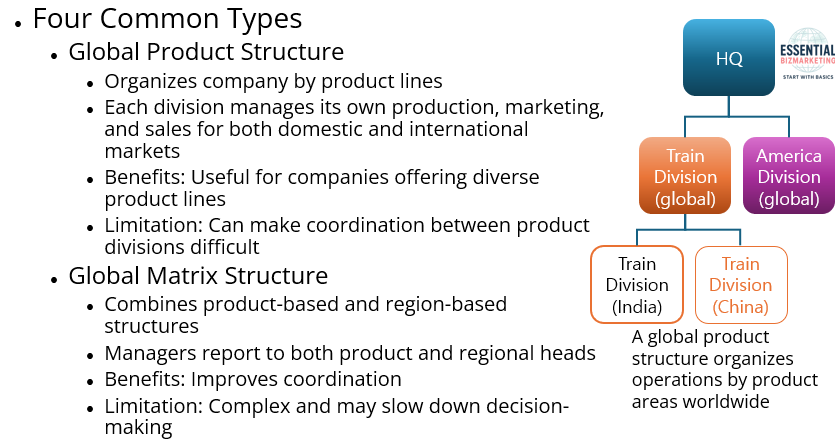
The third is the global product structure, which organizes the company by product lines, with each division managing its own production, marketing, and sales for both domestic and international markets. This approach is useful for companies offering diverse product lines but can make coordination between product divisions difficult.
The fourth is the global matrix structure, which combines product-based and region-based structures. In this system, managers report to both product and regional heads. While this structure improves coordination, it is complex and may slow down decision-making.
5. Role of Work Teams in International Organizations
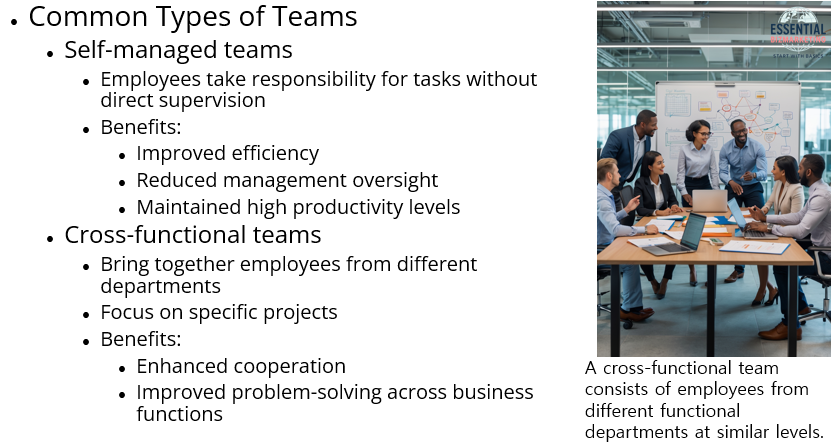
Companies often form work teams to improve decision-making and coordination. There are three common types of teams. The first type is self-managed teams, where employees take responsibility for tasks without direct supervision. These teams improve efficiency and reduce management oversight while maintaining high levels of productivity. The second type is cross-functional teams, which bring together employees from different departments to work on specific projects. These teams enhance cooperation and problem-solving across various business functions.
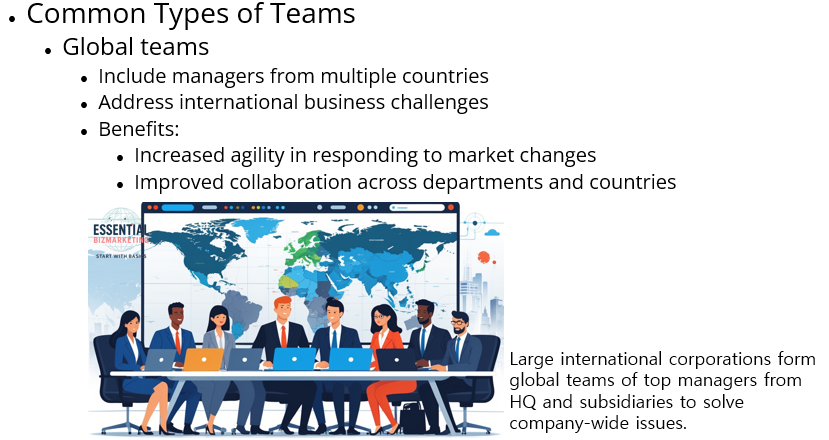
The third type is global teams, which include managers from multiple countries to address international business challenges. These teams help companies become more agile in responding to market changes and improve collaboration across departments and countries.
6. Conclusion
The selection of an international strategy and organizational structure plays a crucial role in a company’s success. A well-planned strategy helps businesses compete effectively in global markets, while the right structure ensures efficient operations and decision-making. Managers must continuously analyze their internal strengths and external environments to adapt strategies and structures to changing market conditions.
Related videos
- Food & Beverage Industry Case Studies
- Retail & Apparel Industry Case Studies
📚 References
Wild, J. J., & Wild, K. L. (2019). International business: The challenges of globalization (9th ed.). Pearson.
📁 Start exploring the Blog
📘 Or learn more About this site
🧵 Or follow along on X (Twitter)
🔎 Looking for sharp perspectives on global trade and markets?
I recommend @GONOGO_Korea as a resource I trust and regularly learn from.
